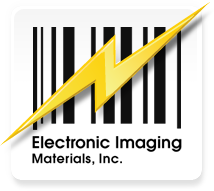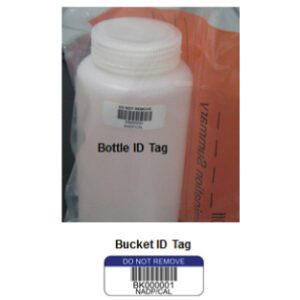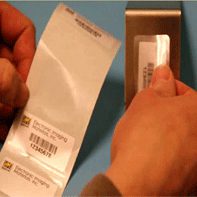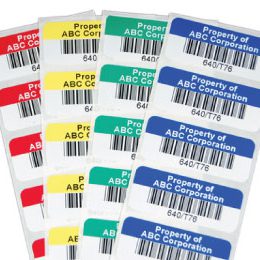You’re in a bustling lab or diagnostic center, processing critical women’s health tests with advanced machinery from Hologic®. Everything hums along smoothly—until your device flags a barcode error. You inspect the sample, and guess what? The label is either peeling off or misaligned for scanning. With thousands of tests queued up, that’s the last thing you need.
This scenario highlights why Hologic-compatible labels are more than just stickers. They’re unsung heroes, ensuring your diagnostic workflow runs like a well-oiled machine. In this piece, we’ll unveil what “Hologic-compatible” really means, explore the risks of using incorrect labels, and show you how a qualified supplier can help you avoid headaches, downtime, and compliance issues.

Where High-Tech Meets High-Stakes
In medical and diagnostic testing, everything has to be perfect—or as close to perfect as humanly possible. With Hologic’s advanced diagnostic instruments (like the ThinPrep® 5000 and Panther Fusion® Systems), you’re dealing with state-of-the-art technology that conducts vital tests, often for women’s health. These machines require labels that meet specific, rigorous criteria to ensure every scan, every result, and every piece of data is on point.
You might ask, “But can’t I just use standard labels?” The short answer: not if you want to avoid scanning errors, sample misidentification, and potential regulatory violations. That’s why Hologic has spelled out the need for Hologic-compatible labels—an entire category of labeling solutions engineered to meet stringent performance standards, from the adhesive used to the layout of the printed text and barcodes.
What Hologic-Compatible Means in Medical Equipment Labeling
So, what does “Hologic-compatible” actually mean? In essence, these labels must withstand the entire testing process within Hologic machines without peeling, smudging, or slipping out of alignment. They should remain firmly attached when you load, process, and offload specimens, all while preserving crystal-clear barcodes and text. That’s a tall order if you consider the mechanical stress, temperature shifts, and occasional use of solvents or reagents in lab settings.
These labels also often come in sets. This means if you’re tracking multiple vials or components in a single workflow, each label in the set must align perfectly so the system can read them in unison. That consistency is the cornerstone of advanced medical equipment labeling, especially for sophisticated diagnostic instruments that run automated processes. A single misread label can derail an entire batch of tests or produce questionable data.
The Long Qualification Process
Hologic doesn’t rubber-stamp any label that claims to be “medical grade.” There’s a thorough (and sometimes lengthy) qualification process behind the scenes. A label supplier has to prove their materials, adhesives, and print methods live up to Hologic’s exacting standards. That involves:
- Extensive performance testing in real or simulated device conditions.
- Verifying labels don’t jam, warp, or detach inside Hologic equipment.
- Ensuring barcodes remain legible, no matter the mechanical or environmental stress.
Only suppliers who clear these hurdles can confidently say they offer Hologic-compatible labels.
Why the Wrong Labels Are a Recipe for Disaster
It’s tempting to assume that if a label looks similar in size and shape, it’ll work just fine. But let’s talk about what might happen if you try to cut corners:
- Machine Malfunctions: Hologic machines rely on precise alignment. A misaligned label can create paper jams or confusion about which sample is which.
- Wasted Time and Materials: Even minor print shifts or adhesive failures force lab technicians to re-label specimens, wasting precious hours and driving up costs.
- Regulatory Risk: In healthcare, mislabeled samples don’t just cause delays; they can compromise patient data or lead to serious compliance issues.
- Damaged Reputation: If a client or partner finds out your lab experiences frequent labeling errors, that trust can evaporate faster than you can say “quality assurance.”
The stakes are high. These advanced diagnostic instruments are designed to spit out data quickly and accurately, but they’re also finicky about labels. The “close enough” approach can backfire, and that’s not a gamble you want to take in a lab environment.
Materials and Adhesives That Make the Cut
The types of materials or adhesives needed for Hologic machines depend on your exact application. But broadly, you’ll be looking at materials formulated to handle chemical exposure, moisture, and temperature shifts. Some might be specialized synthetic stocks with high tear resistance; others might feature adhesives that remain tacky even after repeated handling.
Testing Beyond the Basics
Hologic-compatible labels require an adhesive that can bond firmly to specimen tubes or slides without leaving residue if removed. They should also handle potential disinfectants or sample fluids without warping or fading. The idea is that from the moment you apply the label to the final data read-out, the label remains in top shape.
Don’t let your lab fall victim to labeling hiccups. EIM offers a range of Hologic-compatible options designed to align perfectly with your testing workflows.
How to Tell if a Supplier Is Legit
How do you know if your supplier is truly Hologic-qualified? They’ll be upfront about it. It’s not something you can fake or rush; we’re talking about months—sometimes years—of meticulous research, testing, and revisions. By the time a supplier says they’re qualified, it means Hologic has vetted them through rigorous evaluation, verifying they meet the equipment’s stringent demands.
Questions to Ask
- “Can you provide evidence of your qualification?”
- “Do you have success stories or references from labs currently using your labels on Hologic machines?”
- “What’s your process for ongoing quality control?”
A qualified partner will have answers that instill confidence, not confusion. Beware of any vendor that sidesteps these questions or offers vague replies like, “We work with many medical companies.” For Hologic gear, you need crystal clarity.
Where Compliance and Safety Intersect
Any conversation about medical equipment labeling ultimately circles back to patient safety and regulatory adherence. Hologic systems process sensitive tests—often for conditions where timely, accurate results can change lives. A mislabeled sample can lead to:
- Misdiagnoses if the lab confuses patient specimens.
- Regulatory infractions if you can’t maintain a clear audit trail.
- Financial repercussions from re-testing or even legal action in worst-case scenarios.
Choosing Hologic-compatible labels protects your lab’s integrity. You reduce the risk of data errors and prove to auditors, patients, and healthcare partners that you’re serious about quality from start to finish.
Real-World Impact—From Downtime to Uninterrupted Workflow
Labs that switch from generic stickers to Hologic-compatible solutions often see immediate gains. Technicians no longer scramble to reprint or realign labels that don’t scan. Machines run with fewer errors, saving on maintenance costs. Productivity rises because staff can trust that once a sample is labeled, it’ll be recognized and read reliably from the first step to the last.
Think about it like trading in a subpar tire for one that’s specifically designed for your vehicle: you notice better handling, better safety, and fewer pit stops. In the fast-paced environment of diagnostics, that edge can make a world of difference.
How to Integrate Hologic-Compatible Labels
If you’re considering upgrading your labeling protocol, here’s a simple roadmap:
- Audit Your Current Workflow: Identify pain points—where do misreads or machine jams often occur?
- Consult a Qualified Supplier: Discuss your lab’s unique demands, from volume to environmental conditions.
- Test, Test, Test: Apply sample labels and run them through your actual or simulated cycles. Check adhesion, scanning accuracy, and overall durability.
- Educate Your Team: Ensure everyone understands the do’s and don’ts of handling these specialized labels—no mixing them up with generic ones.
- Monitor & Adjust: Periodically reevaluate your process. If you scale up or change your testing format, verify that your labels still align with new parameters.
Consistency is the name of the game. And once you lock in a system that works flawlessly, you’ll wonder how you ever managed with anything else.
Count on EIM for Proven Hologic-Compatible Labeling Solutions
Electronic Imaging Materials (EIM) understands how important it is for medical labeling to perform flawlessly. As a qualified supplier for Hologic systems, we’ve developed label sets that meet the most exacting standards—resisting harsh chemicals, multiple processing steps, and the high demands of diagnostic workflows without peeling, smudging, or misreading.
- Expert Guidance: Not sure which materials or adhesives are right for your application? Our team is here to assess your workflow, equipment, and sample types to recommend the ideal solution.
- Precision Engineering: Every label set we produce is configured to align precisely with Hologic’s layout and scanning requirements, so your lab runs without interruptions or labeling issues.
- Reliable Performance: From application through processing, our labels are built to stay in place and maintain print clarity, helping ensure accuracy and compliance every step of the way.
Do you need labels that meet your standards and your system’s? Reach out to our labeling specialists or request a sample—because the right label makes all the difference.





